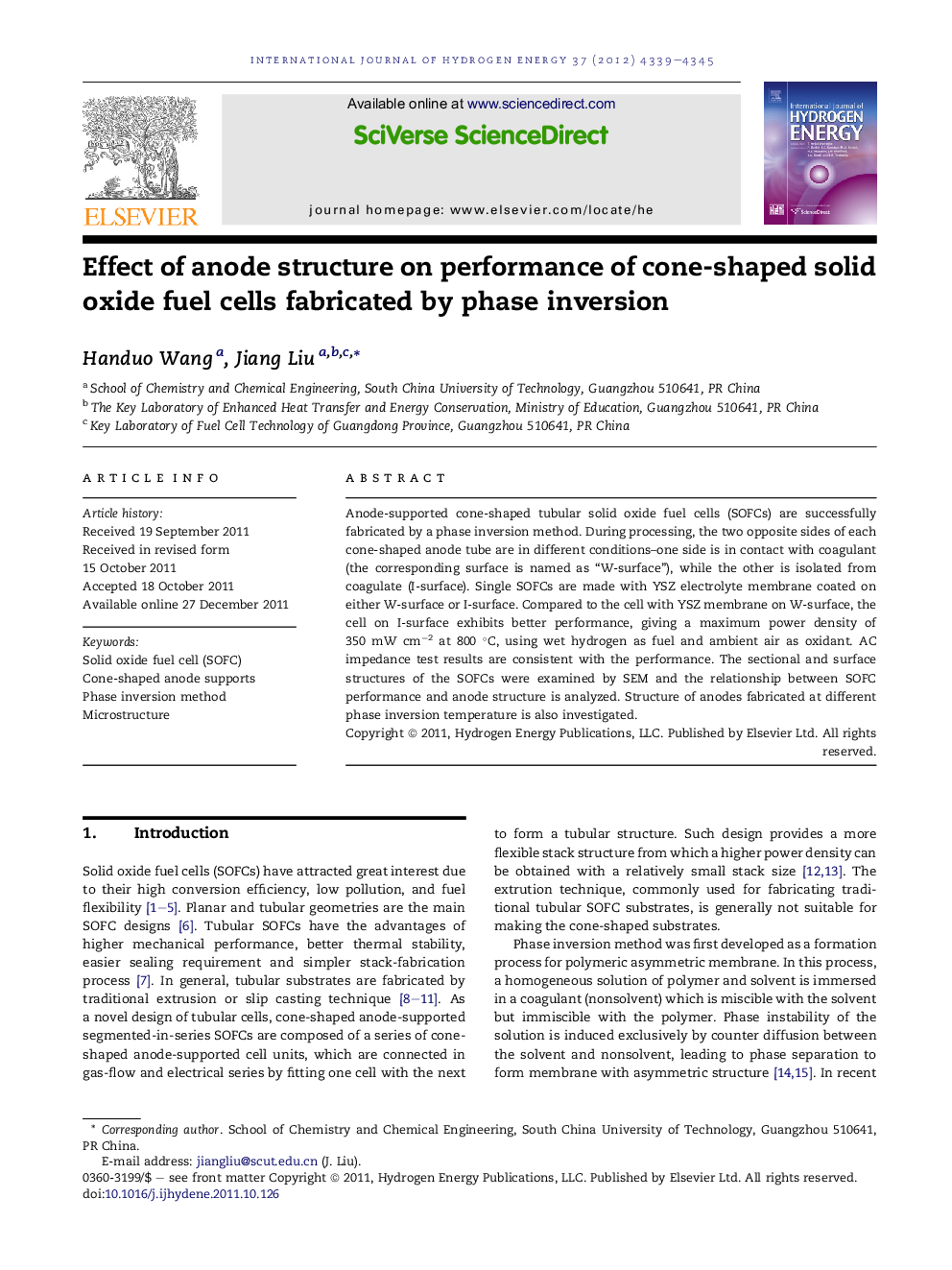| Article ID | Journal | Published Year | Pages | File Type |
|---|---|---|---|---|
| 1275490 | International Journal of Hydrogen Energy | 2012 | 7 Pages |
Anode-supported cone-shaped tubular solid oxide fuel cells (SOFCs) are successfully fabricated by a phase inversion method. During processing, the two opposite sides of each cone-shaped anode tube are in different conditions--one side is in contact with coagulant (the corresponding surface is named as “W-surface”), while the other is isolated from coagulate (I-surface). Single SOFCs are made with YSZ electrolyte membrane coated on either W-surface or I-surface. Compared to the cell with YSZ membrane on W-surface, the cell on I-surface exhibits better performance, giving a maximum power density of 350 mW cm−2 at 800 °C, using wet hydrogen as fuel and ambient air as oxidant. AC impedance test results are consistent with the performance. The sectional and surface structures of the SOFCs were examined by SEM and the relationship between SOFC performance and anode structure is analyzed. Structure of anodes fabricated at different phase inversion temperature is also investigated.
► Cone-shaped anode-supported SOFCs are fabricated by phase inversion. ► Microstructures of the two opposite sides of the anode wall are different. ► Performance of SOFC with YSZ on the surface isolated from coagulant is good. ► The side contacting water is a typical asymmetric structure by phase inversion. ► 20–50 °C is a suitable inversion temperature range for fabricating anode supports.
